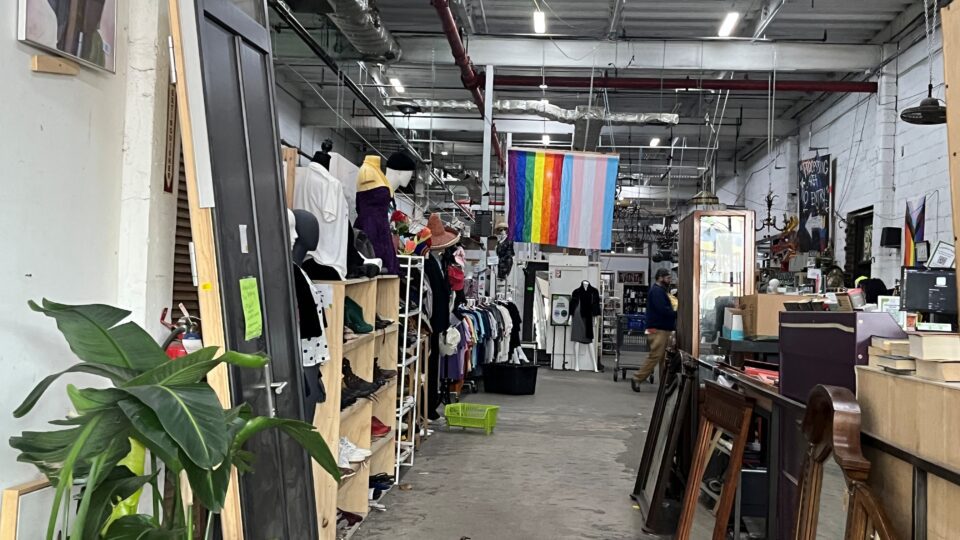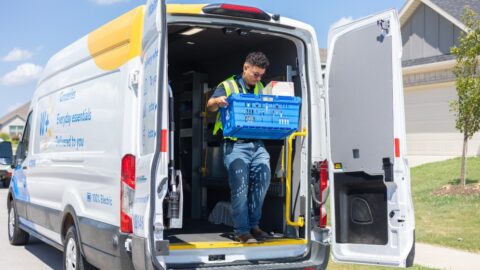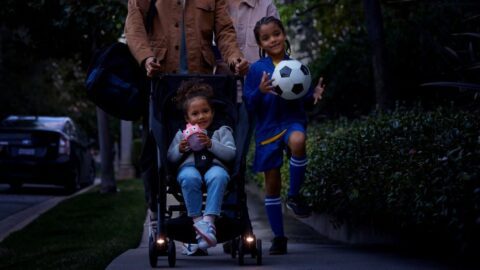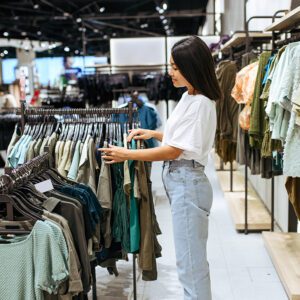Nestled in a back parking lot of the industrial waterfront that lines Brooklyn’s Gowanus Canal is an absolutely fantastic thrift store of the old school — a sprawling warehouse filled to the brim with used goods organized in a somewhat jumbled manner by general category. Big Reuse’s unassuming exterior blends in perfectly with the loading docks, storage facilities and various trade businesses in the area, but that bare-bones façade belies a veritable treasure trove within.
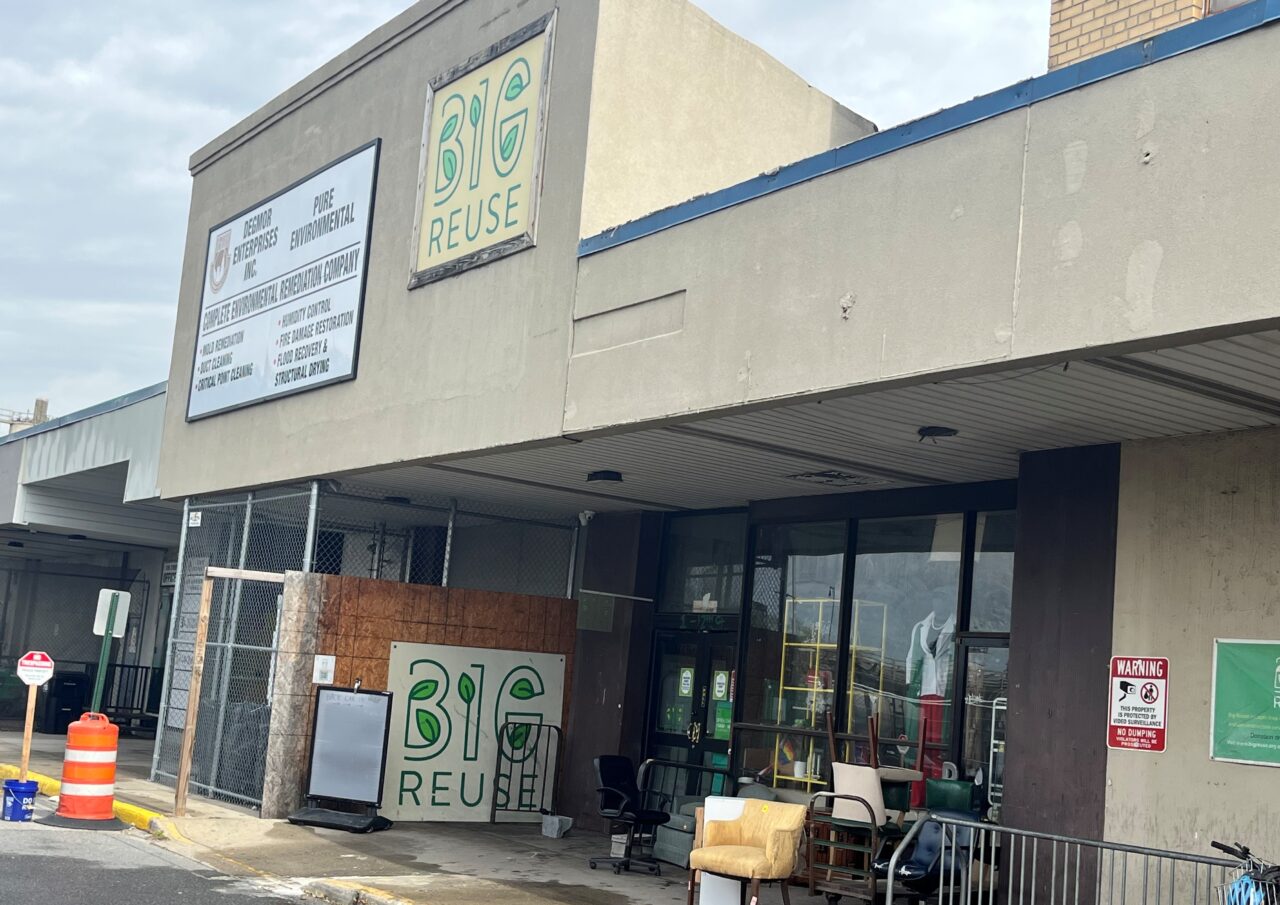
The store’s modesty also belies a larger ecosystem of community-based environmental initiatives dedicated to reusing all kinds of waste, from consumer goods to food scraps. In addition to the tens of thousands of items resold every year through its shop, Big Reuse also operates composting programs and street tree care projects across New York City, funded in part by profits from the store. And now, this literal grassroots organization is taking things to the next level with AI.
The Big Reuse thrift shop is one of the first testing grounds for a new AI-powered tech called Thriftly that is aimed at modernizing in-store resale logistics. The company was founded by two veterans of fellow circular economy tech solution Happy Returns, Andy Downard and Josh Packard, and uses AI to tackle one of the trickiest facets of secondhand retail — pricing.
Why Pricing is Such a Crucial Unlock for Nonprofit Resale
For years, thrift shops across the country have priced products based on a combination of staff know-how and gut feeling. This somewhat unsystematic system worked for many years and led to many a happy bargain hunter, but as secondhand commerce has gradually moved online, the true value of used goods has become much less murky.
Advertisement
One of the results has been the rise of a new class of online merchants — resellers. These individuals are skilled at spotting the high-value treasures amid jumbles of junk and have created successful businesses by plucking them up from thrift stores and estate sales then reselling them online at a profit.
Resellers are good clients of thrift stores in their own right, but this new class of secondhand shoppers also has brought to light the fact that the thrift stores themselves — many of which are nonprofits designed to finance other social initiatives — could often be making more money. On the morning that Retail TouchPoints visited the Big Reuse store, the organization’s Founder and Executive Director Justin Green estimated that at least a third of the current clientele was resellers. “They come every day, and when I see the big stacks of stuff they walk out with, I mean, it’s great, but I don’t really want to be the reseller supplier,” he said. “Then our regular customers who come in after work feel like it’s all picked over. Ideally, you want to save some of it for everyone else.”
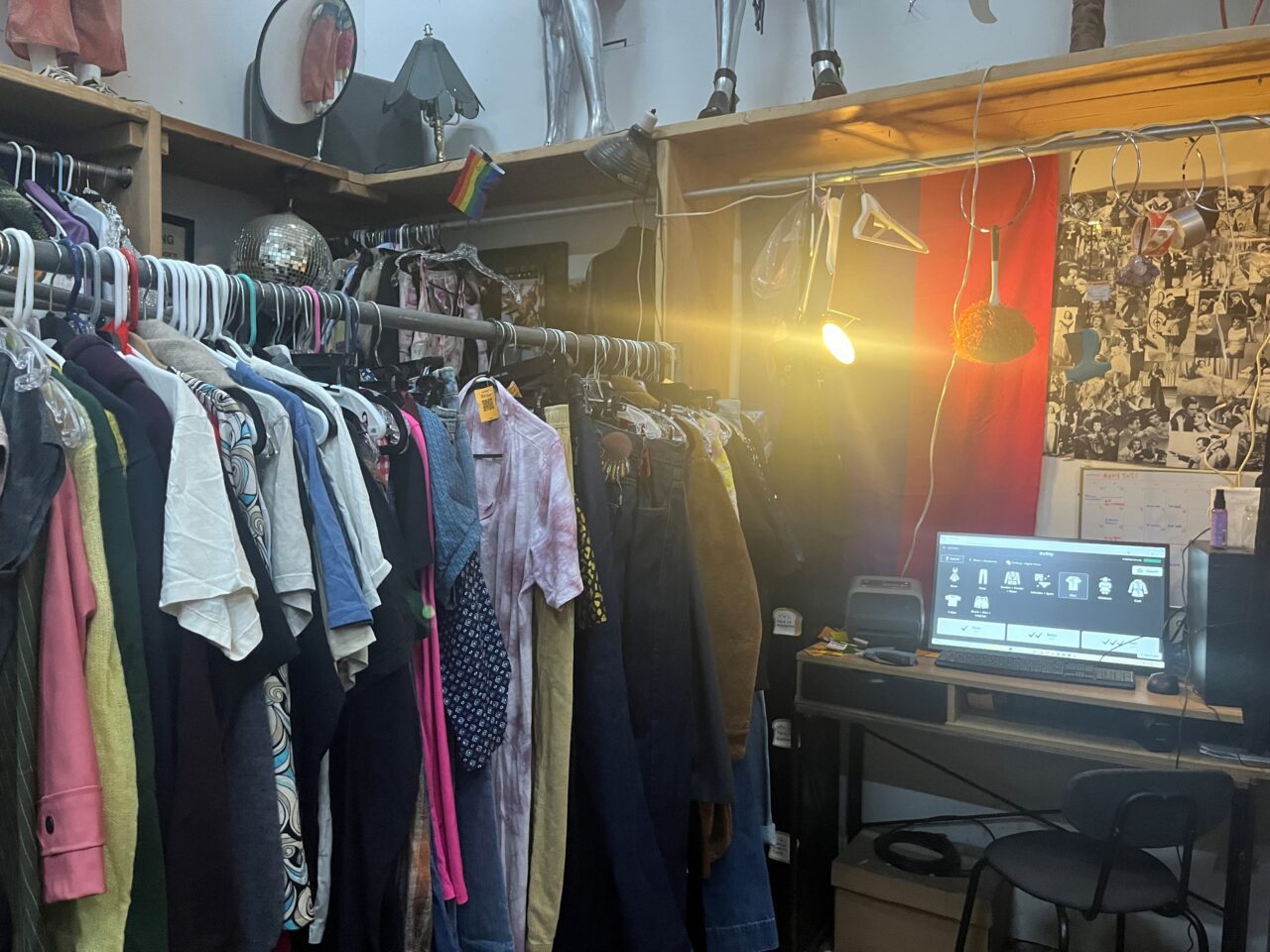
Perhaps even more important, though, is the fact that every extra dollar Big Reuse can make means an extra dollar for its other environmental initiatives. And that’s where Thriftly comes in.
“Each of the tens of thousands of people pricing [in thrift stores] every day are carrying around a bunch of information in their heads, and it’s led to really coarse pricing rules: These are pants, they’re good quality, so they’re going to be $9.99,” said Thriftly Co-founder Downard. “You end up getting Levi’s and Dockers both priced at $9.99, when really the Levi’s should be more like $16.99, for example, because at $9.99 they aren’t staying in the store, a reseller is getting them and they’re going online.
“And then Dockers priced at $9.99 is too much, so they don’t sell and end up getting shipped overseas for salvage,” Downard added. “What you want to do is price the Dockers at more like four or five bucks, then they sell and you also get that wallet share from [low-cost retailers like] Walmart and you keep the good stuff in circulation in America. The real opportunity [for thrift stores], with all the money that resellers are currently capturing and the missed opportunities for sales on the lower end, is to capture some or all of that so that they can use it to fund more” of their nonprofit work.
After just three months using Thriftly, Big Reuse already has seen a 15% increase in revenue, and the system isn’t even being used across all areas of the store yet.
The Difference a Price Tag Can Make
Big Reuse is rolling out the pricing changes slowly across categories because, in many cases, items have never even been priced individually before. For example, clothing was previously marked at blanket prices based on product type and how long the item had been in the store (indicated by color-coded tags). Now, each item of clothing is tagged with a price, and the results have been undeniable: Prior to the Thriftly implementation the clothing section of the store would bring in about $7,000 a week; now that number is closer to $9,500.
And this bump in sales isn’t even because Big Reuse is making the items that much more expensive; it turns out that customers like seeing the price on the item and simply buy more because it’s a better experience. “Previously we didn’t have stickers, we didn’t have price tags, so that has been a really big change in and of itself,” said Green. “We sold everything in units, like all T-shirts were the same price and you had to look up at the sign to see what that price was. But once we put tags on things, we actually sold more stuff. I think people could better see what they were getting and how cheap everything was.”
The Big Reuse team also is now better able to take advantage of trends and seasonality in its pricing practices. For example, this season Carhartt jackets were a hot item, selling for as much as $200 online. Big Reuse wouldn’t price them that high, but the team is now empowered to price an item like that higher than the store’s standard for a winter coat.
Bringing Order to Chaos
Big Reuse is only at the beginning of its modernization journey, which, in addition to Thriftly, also has included the deployment of advanced POS software from Shopify. Green said the biggest advantage of Shopify’s system is that it allows unlimited SKUs, which is crucial for a secondhand store where every item is unique.

“We’re a nonprofit focused on helping the environment, and we do that by diverting materials, so we take pretty much everything,” said Green. (This is true — during our visit we saw an assembled staircase, a wide range of lumber in varying styles and sizes, a full selection of 3D printers and a Sub-Zero fridge among the store’s offerings).
“Because we take everything it’s a little bit more chaotic here than even a more traditional thrift store,” added Green. “We have no idea what’s coming in on a particular day, it’s all over the place, so there’s a lot of brain power that goes into figuring out what to keep, what to price things [at] and sometimes what it even is. The Thriftly system is bringing some order to that chaos.” (What does a staircase go for, one wonders?)
Thriftly operates as an extension of the Shopify POS, and in the sections where it has been rolled out, each item now includes a unique QR-based price tag. Tagging each item offers a range of other advantages beyond more sophisticated pricing. For example, Big Reuse is now able to track items in a way they never could before, assessing sell-through to make adjustments on items that are selling quickly or not quickly enough, and even detecting seasonal sales patterns.
Using the Online Resale Ecosystem to Get Smarter In-Store
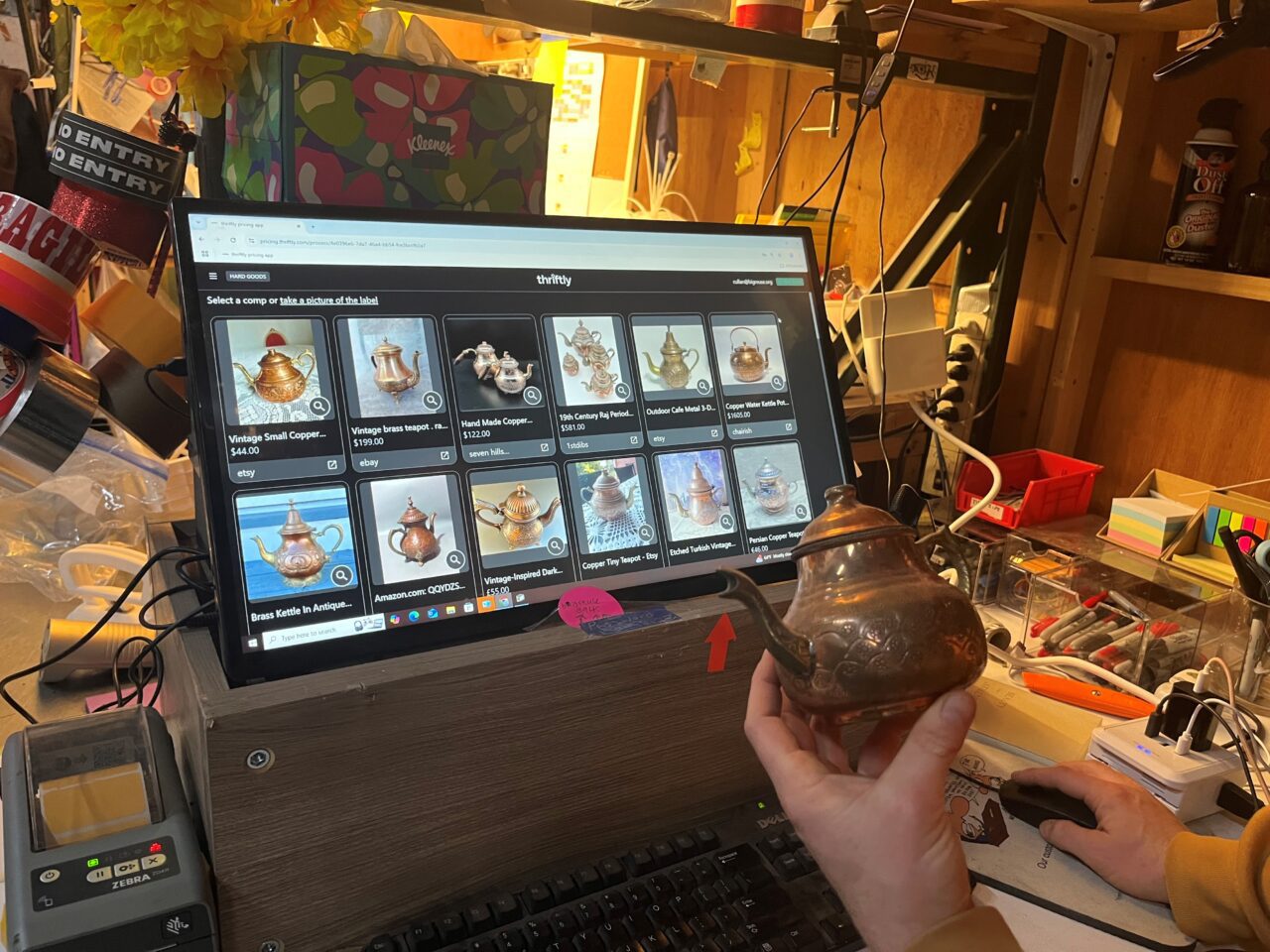
The Thriftly solution also features an AI-powered computer vision system that the Big Reuse team is beginning to use more and more, particularly for those harder-to-identify items. During our visit we tested it out with a couple of items, including a vintage handheld computer vacuum in its original box and a copper tea kettle. An associate took pictures of the items using the camera, and within seconds Thriftly had come back with a series of online listings for visually similar items.
In both cases, some of those listings were exact matches for the somewhat nebulous products in front of us. And in both cases, the items ended up being worth much more than they would have traditionally been priced (who would think that an old computer vacuum could bring in $36?).
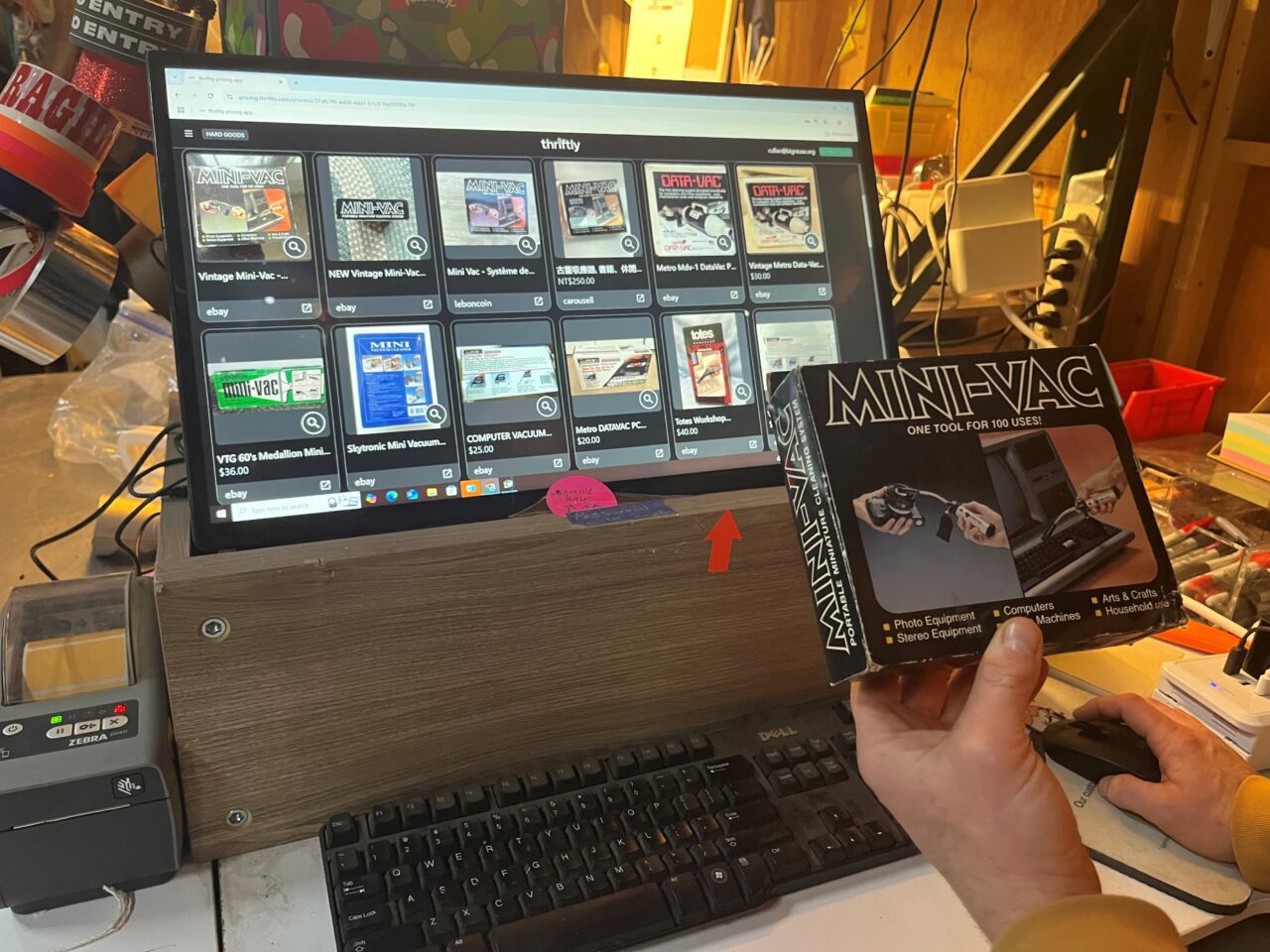
Big Reuse doesn’t mimic the online prices exactly (the Mini-Vac went to the shelf priced at $17.49, for example), but that’s still more than it probably would have been priced at last year. “Just three months ago, we would print off long strings of the same price tags and just pull from them based on what we thought the item was worth,” said Green.
Reducing Waste While Bolstering Local Economies
The ongoing modernization of this Brooklyn thrift store is improving the experience for both employees and customers, but the best part is that it’s all in service of Big Reuse’s larger mission, said Green.
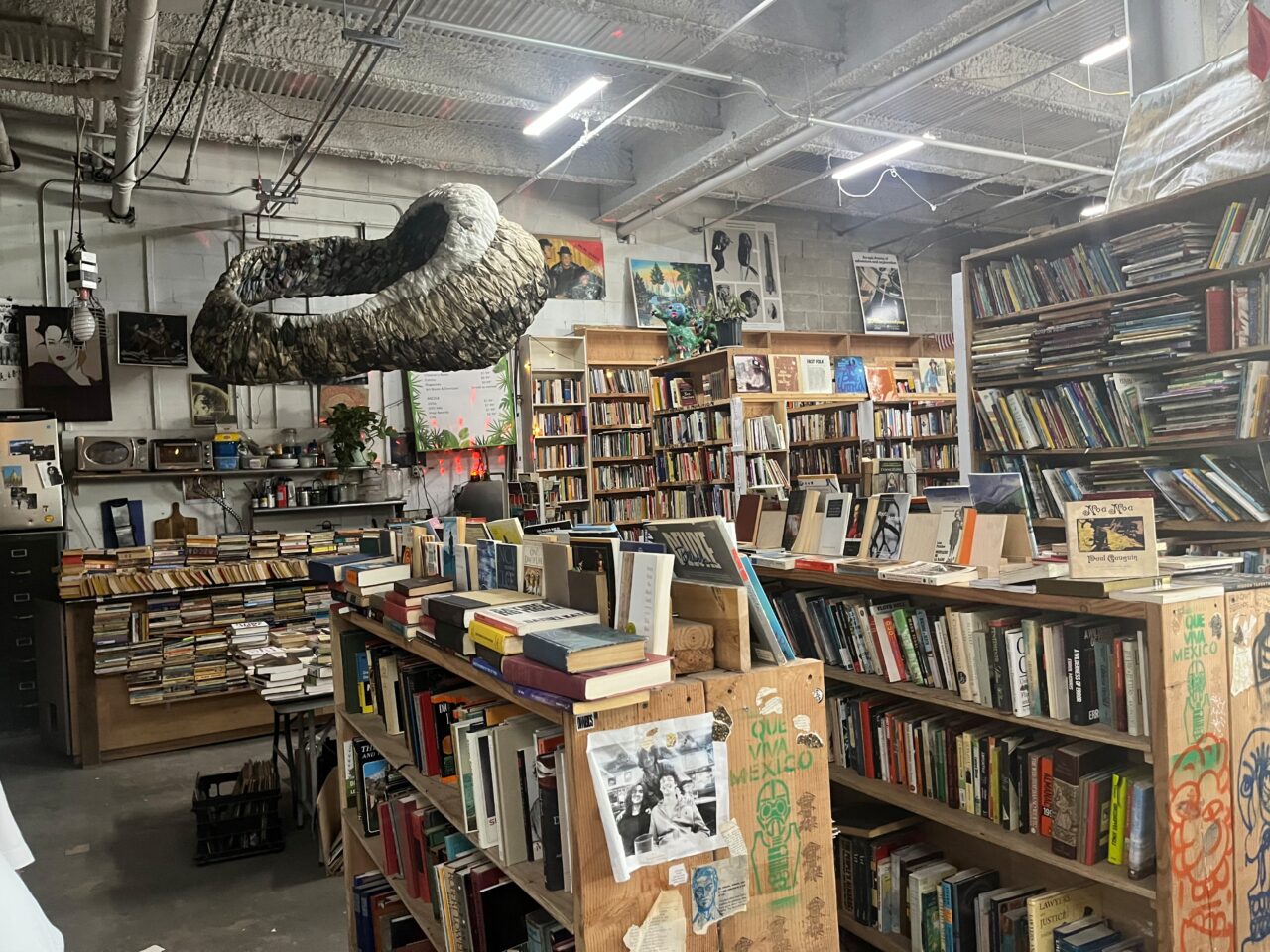
“It’s all connected,” said Green. “These waste streams — construction waste, organic waste, simple household waste — it’s all going into the garbage, so what can we do? Each of our initiatives is aimed at trying to create solutions, but they also create local jobs and keep money in the local economy. Instead of going to Walmart and buying something new and having the money flow out, you’re circulating the money locally. In a world where local small retail is really struggling, this is all another way to participate in the local community.”
And Thriftly is aiming to make it all more efficient and profitable, on the thrift store side that is. The company is still very much in its early innings and Downard has big plans for where the tech can go from here, including a range of interesting use cases for those price tags: “On the experimental side we’re working to make the QR connect to a URL you can scan with your phone, and it will show you all the comps that were used to help determine the price so you can see if you got a good deal,” he said. “And if you think you can get a better deal at Ebay, you can just click out and buy it there instead, or you can share it on social. Eventually we also want you to be able to do self-checkout with your own phone.”



